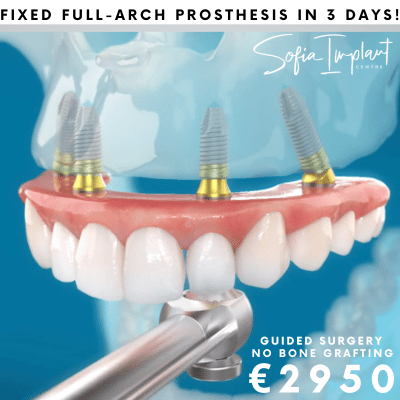Patients without any teeth, the bite changes over time and the placement of implants and teeth requires special skills and a lot of experience. Incorrect planning can lead to unpleasant side effects including migraine headaches.
As to determine the correct bite it must all start with a thorough examination by a specialist. Digitail images are made through a software, which creates visualisations. Then, together with the dental laboratory, an equipment is used, which records and pre-sets individual movements of the jaw on the patient – the so called facial arch and articulator with individual values and perimeters. This process allows the production of prosthetic structures with an anatomical shape as close as possible to that of natural teeth and prevents the occurrence of improper contacts between artificial and natural teeth (if any), which is one of the main causes of metal-ceramic and all-ceramic fracture constructions. This method of planning is used mainly in large bridge structures, but in some cases it is also used in the manufacture of crowns and removable prostheses. Making a preliminary wax modeling – the so-called wax-up, helps to plan and predict the aesthetic result of the new design.
The bite registration is a key step in a complete dental restoration and it is important to trust experienced professionals.
Related article:
What does quality mean in full-arch restoration?

Our Promise and Guarantee
We treat every patient with respect, responsibility and professionalism.
All our reconstruction works carry a 5-year guarantee subject to proper post-treatment care. All implants have a lifetime structural guarantee.
Get your free individual treatment plan today!
Get your free individual treatment plan today!
Related posts and videos:
 What quality to expect from Sofia Implant Centre. Materials used, services & work standards.
What quality to expect from Sofia Implant Centre. Materials used, services & work standards.
 Your Biggest Risk in Dental Implantation
Your Biggest Risk in Dental Implantation
 What is a dental implant?
What is a dental implant?
 Are dental implants right for me?
Are dental implants right for me?
 How to choose the best implants on the market?
How to choose the best implants on the market?
 CBCT (3D) Scan – Why Is It Important?
CBCT (3D) Scan – Why Is It Important?
 Extraction of teeth and placement of implants
Extraction of teeth and placement of implants
 Implants and lack of jawbone
Implants and lack of jawbone
 What is All-on-4 and All-on-6 complete dental restoration?
What is All-on-4 and All-on-6 complete dental restoration?
 The three most important things for successful treatment by the ALL-ON-4/6 protocol?
The three most important things for successful treatment by the ALL-ON-4/6 protocol?
 ZIRCONIUM and … zirconium.
ZIRCONIUM and … zirconium.
 Why the modern dental laboratory is so important?
Why the modern dental laboratory is so important?
 Surgical guides for dental implants – why is it so important?
Surgical guides for dental implants – why is it so important?
 Why getting an implant passport is a must?
Why getting an implant passport is a must?
 Classic or basal implants
Classic or basal implants
 Bite registration for complete dental restorations.
Bite registration for complete dental restorations.

